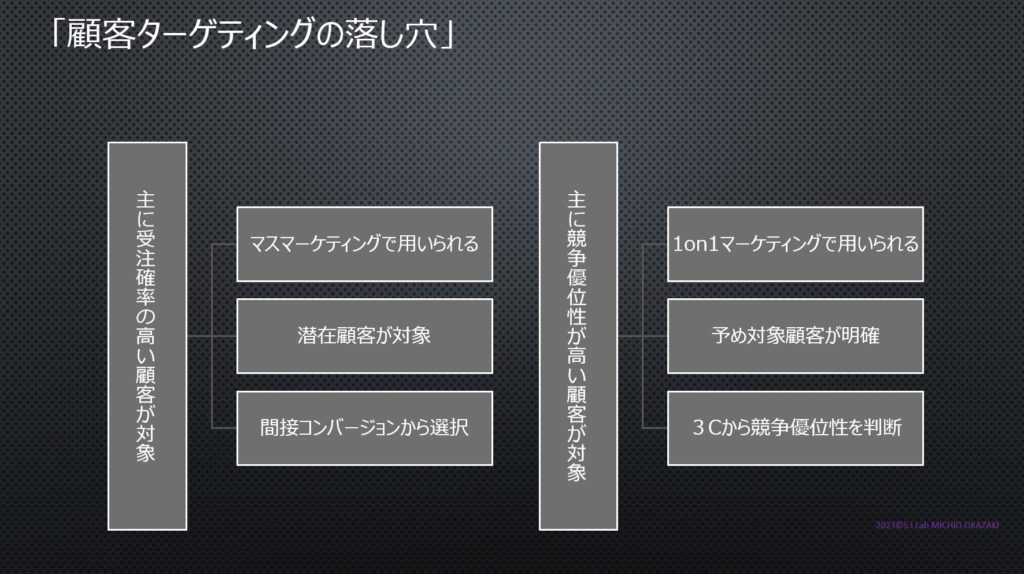
顧客のターゲティングには、顧客ターゲティングは、
地理的ターゲティング(Geographic Targeting)
デモグラフィックターゲティング(Demographic Targeting)
行動ターゲティング(Behavioral Targeting)
心理グラフィックスターゲティング(Psychographic Targeting)
利用履歴ターゲティング(Usage-based Targeting)
社会的ターゲティング(Social Targeting)
などがありますが、実践的には、大きく2つの方法があります。
一つは、マーケティングオートメーションで行われる、受注確率の高い顧客をターゲットにする方法。
もう一つは、3Cの視点から競争優位性を得られる顧客をターゲットにする方法です。
これは対象となる顧客が予め明確な1on1マーケティングで活用されます。
顧客ターゲティングで陥りやすいのは、単に市場規模や自社売上の大きな顧客を優先ターゲットにしてしまうことです。
これでは顧客タイプや競合状況の異なる顧客が混在してしまうために、ビジネスプランが当てはまらず、無駄にリソース量が増大する割にはリターンが得られにくくなってしまいます。
“The Pitfalls of Customer Targeting”
When it comes to customer targeting, there are various methods such as geographic targeting, demographic targeting, behavioral targeting, psychographic targeting, usage-based targeting, and social targeting.
However, in practical terms, there are two major approaches:
One is to target customers with a high probability of conversion, often implemented through marketing automation.
The other is to target customers who can provide competitive advantage from a 3C perspective (Customer, Company, Competitor).
This is used in 1on1 marketing where the target customer is clear in advance.
A common trap in customer targeting is prioritizing customers solely based on market size or the company’s own sales figures.
This approach leads to a mixture of customer types and different competitive scenarios, rendering business plans ineffective and causing resource allocation to increase without proportionate returns.

